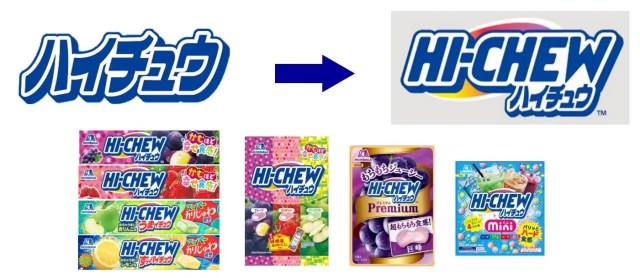
America’s second-most popular Hi-Chew flavor will also make its in-Japan debut.
Has there ever been a bigger Japanese-sweets-overseas success story than Hi-Chew? Sure, Japanese dessert flavors, like matcha and sakura, have made inroads in other countries, as have certain sweet snack types like ice daifuku (often called “mochi ice cream”). As an individual product from a specific brand, though, few can rival Morinaga’s Hi-Chew fruit chew candies in English-language territories, where even Glico’s Pocky can’t match its popularity and enthusiastic acceptance by the mainstream public.
Hi-Chew wasn’t an overnight overseas success story, though. It first went on sale in Japan back in 1975, but it wasn’t until about 10 years ago that it really caught on in the U.S., thanks in no small part to word of mouth from Boston Red Sox teammates of Japanese pitcher Junichi Tazawa. Free samples at the stadium then turned baseball fans into Hi-Chew fans too, prompting Morinaga to open a Hi-Chew factory in the U.S. to keep retailers including Target, Walmart, and a slew of other retailers outside the Asian food specialty market sphere stocked too.
So now, to reflect Hi-Chew’s evolution to an international snack staple, Morinaga has redesigned the logo it uses for the candy in Japan, and not only have they added English to it, the English text is much more prominent than the Japanese.
▼ Old Hi-Chew logo in Japan
▼ New Hi-Chew logo in Japan
The new logo still features the Hi-Chew name written in Japanese phonetic katakana characters (ハイチュウ), but hanging off to bottom right of the logo, underneath the HI-CHEW part. “We are taking this opportunity to redesign our brand logo from katakana to an English rendering of Hi-Chew as we aim to be a global brand loved by many people,” says Morinaga in its announcement.
Morinaga has also said that it will be bringing mango Hi-Chew, the second-most popular flavor in America (behind strawberry) to Japan for the first time, with the packaging even touting it as “A popular flavor in America!” (アメリカで人気のフレーバー!),
▼ Maybe we should pick up 1,400 of them and make another mega Hi-Chew like we previously did in the SoraKitchen.
It’s not unusual for Japanese businesses to design logos that use English script instead of Japanese. Nintendo, Toyota, and Sony are just three examples of prestigious companies that use an English-text logo for their organizations even within Japan. For that matter, Morinaga itself uses English text for its company logo, which features an angel with M-shaped wings.
In particular, Japanese companies with international aspirations regularly use English logos companywide, with Japanese-text-only logos more commonly associated with entities with a more provincial scope, or heavily focused on products with deep ties to classical Japanese culture.
As such, the logo redesign isn’t likely to be seen within Japan as Hi-Chew sweeping its originated-in-Japan status under the rug, but as a sign that the candy has achieved success and recognition overseas beyond that of a short-lived fad or novelty.
Source, images: PR Times
● Want to hear about SoraNews24’s latest articles as soon as they’re published? Follow us on Facebook and Twitter!
Follow Casey on Twitter, where he continues to have faith that one day Morinaga will bring back its orange-flavor Ice Box.